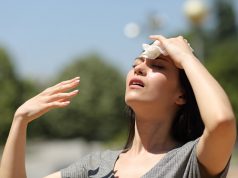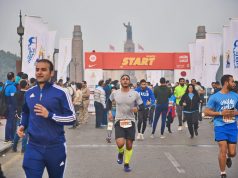Men and women alike have been nipped and tucked for decades, but keeping up with trends in the world of cosmetic surgery is becoming a feat in itself. Body sculpting, the overall term used to describe a wide range of procedures designed to reshape and improve the appearance of your body, is an innovative and painless route to achieve quicker results for patients struggling with stubborn fat, especially after massive weight loss. We spoke with plastic surgeon Dr. George Zaher FACS from Royal Clinic to find out all you need to know about the sculpting process before you jump on the latest fat-shifting and body contouring trends.
Could you briefly explain to us what body sculpting involves?
Body sculpting is a procedure that involves getting rid of the superficial fatty layer right beneath the skin and strengthening the fibrous bands connecting skin to muscle to give the body its ideal contour and shape.
What are the most common reasons a patient undergoes this procedure?
Body sculpting provides a solution for many clients with localized bulks of fat in areas such as the belly or love handles, especially for those who have lost a lot of weight or following pregnancy. Body sculpting is also very important after liposuction to minimize any chance of asymmetry or dimpling in the skin, thereby smoothing the skin of the body and giving it back its curvy look.
 Is anyone eligible or are there prerequisites or exceptions?
Is anyone eligible or are there prerequisites or exceptions?
It is crucial that we determine whether a patient is eligible or not in the preliminary examination. Because body sculpting targets the surface layer of fat, it cannot be performed on obese clients. If a patient has a thick layer of fat, liposuction must be performed first, followed by body sculpting.
Does skin need to be tightened following the procedure?
The skin to fat ratio is also a very important parameter to be considered during the preliminary examination to determine both eligibility and the severity of skin laxity or sagging that can result after the procedure. As a result, we may require skin lifting as well. However, I would advise that the patient wait for three months following liposuction and body sculpting to give the skin a chance to possibly regain its firmness with some exercise before opting for skin lifting.
Are there risks and/or side effects to these procedures? If so, how can they be minimized?
As with any surgical procedure, the patient must be generally fit for the operation, which we pre-determine through lab work. If we discover any complications, we must tackle them prior to the procedure. We must also take into account any medications the patient is presently taking, particularly anticoagulant drugs such as aspirin or heparin that may invite hemophilia. The patient should also refrain from taking vitamins such as Omega 3 and fish oil. Following body sculpting, the only risk that remains is that the patient regains the fat lost during the procedure, which shouldn’t occur as long as the patient monitors his/her eating habits.
How long does the treatment take and is there a recovery period?
The patient goes home the same day of the procedure, wearing a body garment to reduce swelling and ensure the best results regarding skin firmness. The body garment is worn all day for three weeks, and then for the following three weeks it is worn for 12 hours a day. This is one of the integral post-procedural aspects that will determine the shape and contour of your body. Throughout the first couple of weeks, the patient should avoid strenuous activity or exercise. Afterwards, however, exercise is vital to maintain results and build muscle.
 Is it painful during and/or after the procedure?
Is it painful during and/or after the procedure?
Body sculpting is now performed by local anesthesia or epidural, so the patient cannot feel pain throughout the procedure. Afterwards, painkillers and medication are administered to reduce edema and any discomfort the patient may experience.
When can a patient begin to notice results?
Following the procedure, the patient can immediately begin to notice the contours of their body as much more visible. The results are most visible three months after the procedure, where a patient can observe optimum body contours.
How permanent are the results? What lifestyle habits can a patient take into consideration to maintain them?
The results are for life, if maintained by an improved life pattern regarding food choices and meal timings for every individual. Of course, exercise is also an essential factor to maintain the results.
What piece of advice do you normally give your patients before and after undergoing a cosmetic procedure?
It is critical to plan the procedure thoroughly with the patient beforehand to make sure that, not only are they eligible, but that they’re also willing to preserve the outcome. This means that they have to understand that some of their lifestyle habits must change. The doctor will do his part during the procedure but it is solely the patient’s responsibility afterwards to maintain those results.
 Dr. George Zaher is a member of the Egyptian Society of Plastic and Reconstructive Surgery (ESPRS), a fellow of the American College of Surgeons and a member of the British Society of Rhinoplasty Surgery.
Dr. George Zaher is a member of the Egyptian Society of Plastic and Reconstructive Surgery (ESPRS), a fellow of the American College of Surgeons and a member of the British Society of Rhinoplasty Surgery.





